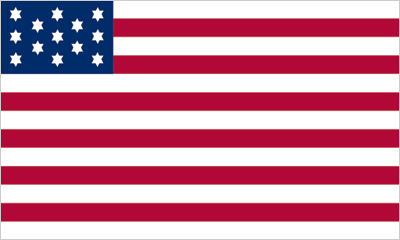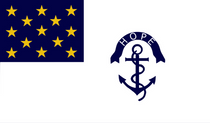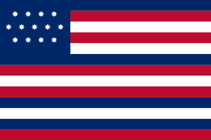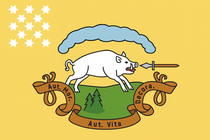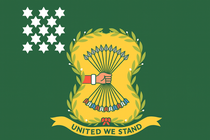
Our Flags
The Flags of the American Revolution
Banners of Freedom
During the American Revolution, flags were more than decoration — they were rallying points, symbols of identity, and declarations of purpose. Whether stitched by patriots in quiet defiance or unfurled in the chaos of battle, each flag told a story: of colonies uniting, of regiments standing firm, and of a young nation rising.
Our fife and drum corps proudly carries these historic banners to honor the spirit of 1776 and the soldiers, musicians, and citizens who stood beneath them. From the familiar stars of the Betsy Ross flag to lesser-known regimental and liberty standards, these flags remind us — and all who see them — of the sacrifices made for freedom and the legacy we continue to preserve through music, education, and public memory.
Our ongoing research has produced what may be the most comprehensive visual collection of American flags from the Revolutionary era, bringing together documented designs, rare regimental colors, and liberty standards not often seen in one place.
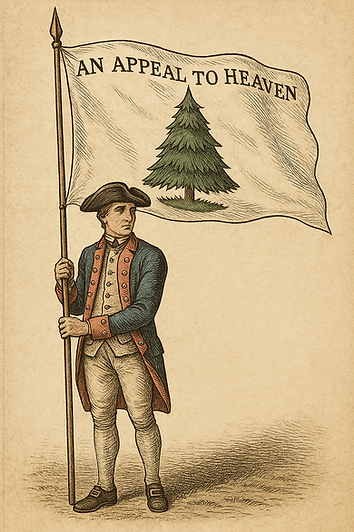
Liberty Flags
Before there was a nation, there were liberty flags. These bold, locally made banners were raised by militias, towns, and patriots to rally support for independence and resist tyranny. Often inscribed with powerful slogans like “Liberty and Union” or “Appeal to Heaven,” liberty standards became early symbols of defiance — carried not by armies alone, but by the people determined to be free.
Continental Flags
The Continental flags of the American Revolution represent the earliest attempts to unify the rebellious colonies under shared symbols before a national flag was formally adopted. These banners were carried by Continental Army units, flown over encampments, and displayed at meetings of the Continental Congress. Though their designs varied, they reflect the evolving identity of a people fighting not just for independence, but for unity.
Militia Flags
Militia flags capture the local spirit and fierce independence of citizen-soldiers who took up arms in towns and counties across the colonies. Unlike the standardized colors of the Continental Army, these banners were often handmade, boldly personal, and deeply tied to regional identity. They flew over hastily assembled companies of farmers, tradesmen, and patriots defending their homes and principles.
Regiment Flags
Regiment flags served as the proud emblems of Continental and state-raised military units during the Revolutionary War. Designed to rally troops and mark unit identity on the battlefield, these flags often featured mottos, symbols, or coats of arms reflecting the heritage and ideals of the soldiers who marched beneath them. Though regulations were scarce, these banners carried deep meaning for the men who served, linking them to their comrades, commanders, and cause.
Naval Flags
Naval flags played a crucial role in the Revolutionary War, signaling identity, intent, and allegiance on the high seas. American ships—both Continental Navy vessels and privateers—flew a variety of jacks and ensigns as they challenged British dominance. An ensign is the large flag flown at the stern to indicate a ship’s nationality, while a jack is a smaller flag flown at the bow, often with symbolic or tactical meaning. Lacking early standardization, American naval flags reflected bold experimentation, regional pride, and political resolve.
Gostelowe Standards
The Gostelowe Standards are a rare surviving set of regimental flags commissioned by Pennsylvania during the Revolutionary War, named after Philadelphia merchant Caleb Gostelowe, who oversaw their production in 1778. Intended for use by state and Continental units, these silk standards combine classical allegory, patriotic slogans, and battlefield symbolism in remarkably detailed hand-painted designs. Though not all were issued, the surviving flags provide a unique glimpse into how the ideals of liberty, virtue, and resistance were visually expressed during the war.
Post Revolution Flags
This section includes flags tied to the Revolutionary era but not firmly documented as wartime standards. Some, like the Whiskey Rebellion and Gonzales flags, arose in the early republic as echoes of Revolutionary ideals. Others, such as the U.S.–French Alliance Flag or the Simcoe Yorktown Flag, were symbolic or contested in origin—used for diplomacy, propaganda, or captured as trophies. Still others, like the modern Gadsden flag or the blue Bunker Hill misprint, reflect how Revolutionary imagery has been reinterpreted, misremembered, or mythologized over time. Together, these flags help trace how the legacy of the Revolution continued to evolve in the years and decades that followed.










